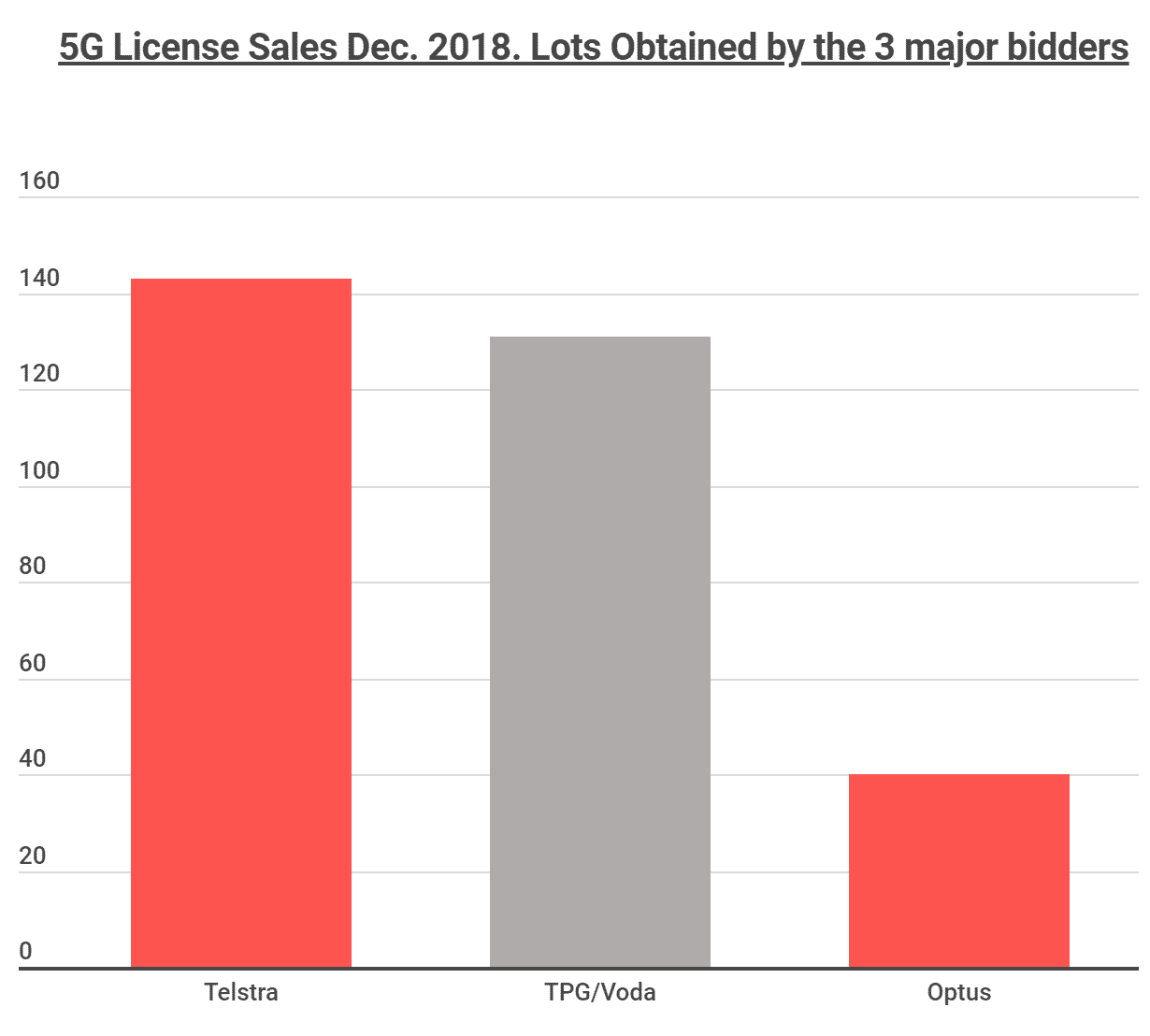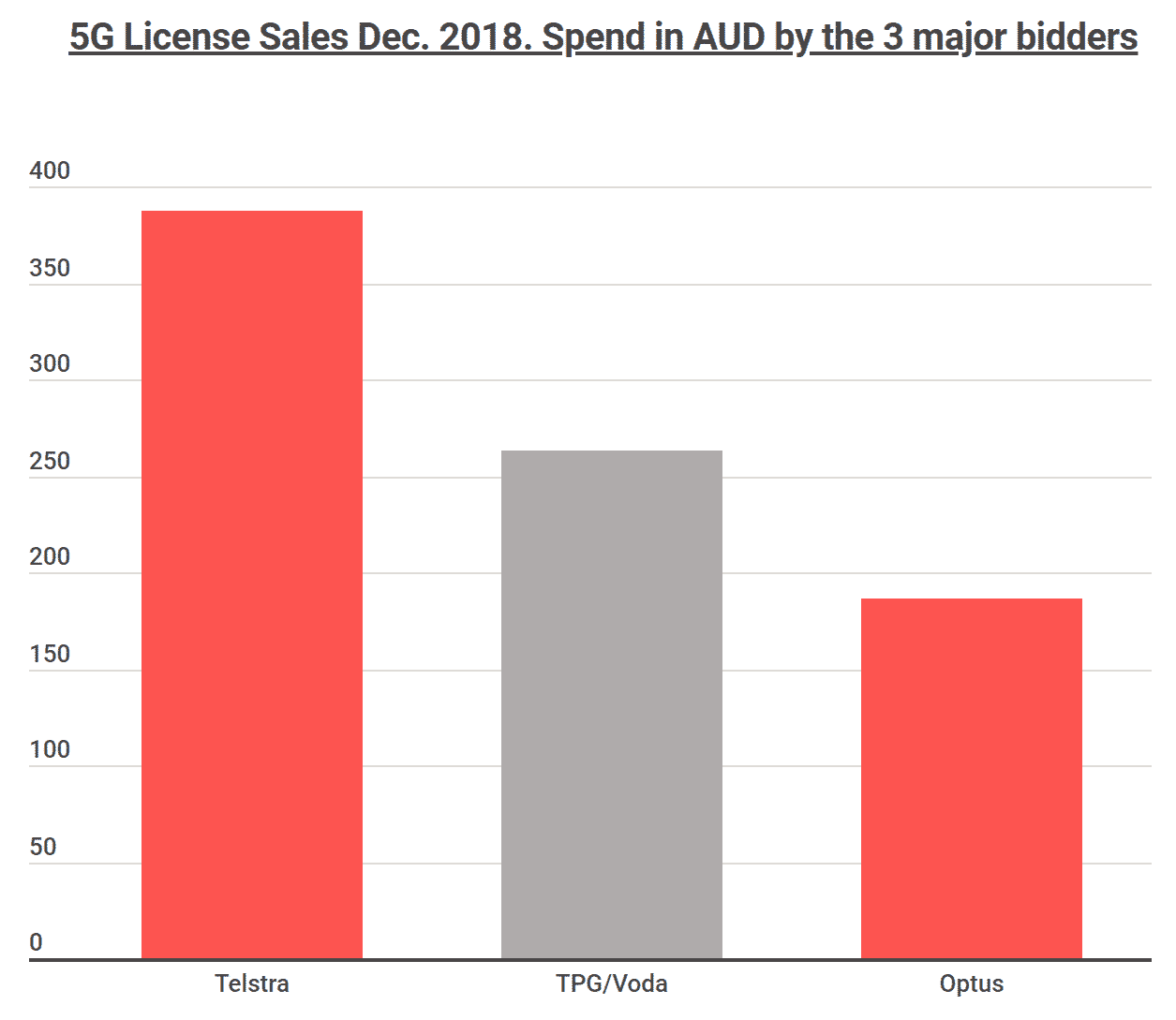The Australian Communications and Media Authority recently held an auction for the spectrum ranges needed to provide 5G to the Australian population. The auction’s end comes eight months after the Federal Government announced it would put 125 MHz of mobile spectrum in the 3.6 GHz band up for auction, opening up the possibility of new 5G services in metropolitan and regional Australia.
The auction was held over three weeks, and the regulatory body set the starting price and put limits on how much each group could buy, in order to keep the market competitive. At the end of the three weeks, the figures on who bought what have finally been released. So what came from the auction, and what does it mean for 5G in Australia?
How it Happened
Only four companies were able to successfully bid for the spectrum. Telstra have come out on top, spending $387 million to get access to 143 lots. Telstra now has 60 MHz of contiguous 5G spectrum in all major capital cities and between 50-80 MHz of contiguous 5G spectrum in all regional areas, when combined with their existing holdings. Previously, Telstra lacked spectrum in Melbourne and Sydney, but this auction meant they were able to fill in the major gaps in their coverage. Telstra plans to “work with the ACMA to enable early access where it is suitable to do so, to ramp-up our roll out plan for 5G in the first half of next year.”
Optus secured far fewer lots but already held spectrum from the previous acquisition of Vivid Wireless
The next biggest purchase was made by a joint venture between TPG and Vodafone, called Mobile JV. The two companies have been in talks for quite some time about a possible merger, which has already proved a threat to other major players like Telstra. While they are expected to officially decide on whether the merger will take place sometime in the next week or two, the joint purchase will go ahead regardless. The two companies jointly spent $263 million for 131 lots around Australia. The spectrum holdings cover a mix of metropolitan and regional areas, allowing the joint venture to provide 5G to a wide population.
Optus was the third company to purchase spectrum at the auction. They spent $186 million on a comparatively smaller 47 lots. However Optus have long had holdings in the 3.4GHz frequency. These holdings were acquired when Optus bought fixed wireless specialist Vividwireless. Their previously held frequency was mostly located in the capital cities, so their purchase at the auction was focused on regional areas in Eastern Australia that will boost the holdings currently in their possession.
Dense Air Australia was the fourth successful bidder and spent $29 million on only 18 lots.
December 2018 5G Frequency Auction. Telstra spent $387m, Vodafone/TPG $263m and Optus $186m.
ACMA were up $853 million after the auction, which came in at around $0.29/MHz/pop. 75 MHz is being held in reserve by NBN Co, as part of measures taken by the Federal Government in 2015 to provide fixed wireless for close to 80,000 premises on the edges of metropolitan areas.
What it Means
The 5G licenses purchased this week will not come into effect until March 2020, and continue through until December 2030. 2020 is the forecasted year that should give Australia access to commercial 5G. Optus currently has holdings that can be utilised, as well as an advanced 5G centre that is experimenting and developing technology for when 5G is commercially available. Telstra has already switched on 5G in numerous locations across Australia, although the lack of devices that can actually utilise the technology makes the rollout somewhat irrelevant to current customers.
That being said, a new device that is said to be 5G capable has been released in China, and there are other phones that plan to offer modifications to make them 5G compatible. At this stage, getting 5G accessible to customers means getting the handset technology, the network and the spectrum holdings all lined up and the technology in the hands of consumers. While that’s definitely foreseeable in the very near future, the elements are not yet ready to be made commercial.
5G will change the way Australia operates, and the country is leading the way in many aspects. Telstra and Optus in particular are focussed on achieving both global and national “firsts” in the race to make 5G commercial. The release of this spectrum is the next step that will allow telcos to take stock of their holdings and plan accordingly. Before long, 5G-capable devices will be in the eager hands of consumers, with a number of networks ready to compete to provide 5G service. Until then, Australian telcos will continue the rollout, and expand their measures to get Australia 5G ready.

